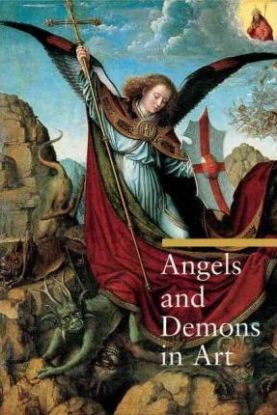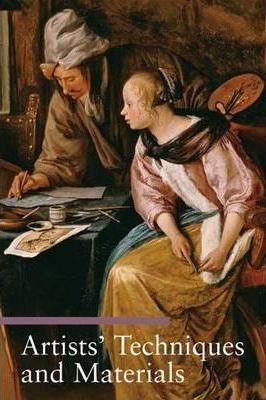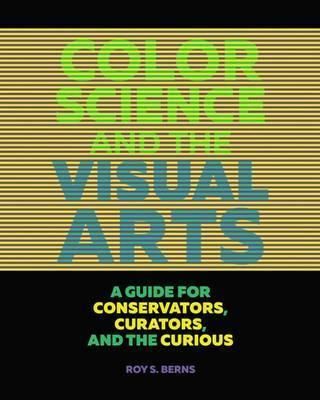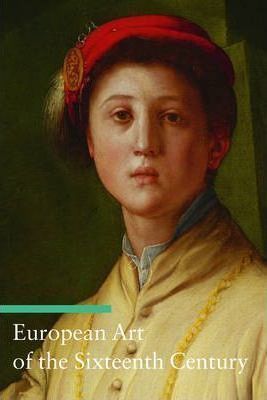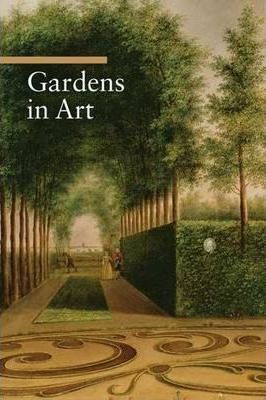Getty Publications
vydavateľstvo
European Art of the Fifteenth Century
Influenced by a revival of interest in Greco-Roman ideals and sponsored by a newly prosperous merchant class, fifteenth-century artists produced works of astonishingly innovative content and technique. The International Gothic style of painting, still popular at the beginning of the century, was giving way to the influence of Early Netherlandish Flemish masters such as Jan van Eyck, who emphasized narrative and the complex use of light for symbolic meaning. Patrons favored paintings in oil and on wooden panels for works ranging from large, hinged altarpieces to small, increasingly lifelike portraits. In the Italian city-states of Florence, Venice, and Mantua, artists and architects alike perfected existing techniques and developed new ones. The painter Masaccio mastered linear perspective, the sculptor Donatello produced anatomically correct but idealized figures such as his bronze nude of David, and the brilliant architect and engineer Brunelleschi integrated Gothic and Renaissance elements to build the self-supporting dome of the Florence Cathedral. This beautifully illustrated guide analyzes the most important people, places, and concepts of this early Renaissance period, whose explosion of creativity was to spread throughout Europe in the sixteenth century.
Vypredané
23,70 €
24,95 €
Angels and Demons in Art
This sumptuously illustrated volume analyzes artists' representations of angels and demons and heaven and hell from the Judeo-Christian tradition and describes how these artistic portrayals evolved over time. As with other books in the "Guide to Imagery" series, the goal of this volume is to help contemporary art enthusiasts decode the symbolic meanings in the great masterworks of Western Art. The first chapter traces the development of images of the Creation and the After world from descriptions of them in the Scriptures through their evolution in later literary and philosophical works. The following two chapters examine artists' depictions of the two paths that humans may take, the path of evil or the path of salvation, and the punishments or rewards found on each. A chapter on the Judgment Day and the end of the world explores portrayals of the mysterious worlds between life and death and in the afterlife. Finally, the author looks at images of angelic and demonic beings themselves and how they came to be portrayed with the physical attributes - wings, halos, horns, cloven hooves - with which we are now so familiar.
Vypredané
23,70 €
24,95 €
Artists' Techniques and Materials
An artist's materials - from the broad brushstrokes of a Van Gogh oil painting, the sparkling gold leaf of a Byzantine mosaic, to the fragile translucence of a porcelain vase - are not just the results of their work. They are the physical embodiment of the artist's creative vision and a reflection of the historical context in which they were used. "Artists' Techniques and Materials" is an extensive and intriguing discussion of the materials and processes used in eight artistic media - painting, drawing, printmaking, sculpture, mosaics, ceramics, glass, and metalwork. Chapters look at each of the topics, with a discussion of the range of materials and techniques that have developed through the centuries. With its 400 full-colour illustrations, this volume is provides new insight into the creation of many of the world's greatest works of art.
Vypredané
23,70 €
24,95 €
Astrology, Magic, and Alchemy in Art
From antiquity to the Enlightenment, astrology, magic, and alchemy have always been considered important tools in unravelling the mysteries of nature and human destiny. As a result of the West's exposure to the astrological beliefs of Arab philosophers and the mystical writings of late antiquity, these occult traditions became rich sources of inspiration for Western artists.This latest volume in the "Guide to Imagery" series, presents an intelligent analysis of occult iconography in many of the great masterpieces of Western art - from the astrological symbols that decorated churches and illuminated manuscripts, through the work of a wide range of Renaissance artists, including Bosch, Brueghel, Durer and Caravaggio, to the visionary works of nineteenth-century artists, such as Fuseli and Blake, as well as in the creative output of the Surrealists during the twentieth century.
Vypredané
23,70 €
24,95 €
Color Science and the Visual Arts
"A curator, a paintings conservator, a photographer, and a conservation scientist walk into a bar." What happens next? In lively and accessible prose, color science expert Roy S. Berns helps the reader understand complex color-technology concepts and offers solutions to problems that occur when art is displayed, conserved, imaged, or reproduced. Berns writes for two types of audiences: museum professionals seeking explanations for common color-related issues and students in conservation, museum studies, and art history programs. The seven chapters in the book fall naturally into two sections: fundamentals, covering topics such as spectral measurements, metamerism, or color inconstancy; and applications, where artwork display, painting materials, and color reproduction are discussed. A unique feature of this book is the use of more than 200 images as its main medium of communication, employing color physics, color vision, and imaging science to produce visualizations throughout the pages. An annotated bibliography complements the main text with suggestions for further reading and more in-depth study of particular topics.Engaging, incisive, and absolutely critical for any scholar or student interested in color science, Color Science and the Visual Arts is sure to become a key reference for the entire field.
Vypredané
48,45 €
51,00 €
Death and Resurrection in Art
This title presents a gloriously illustrated exploration of 3,000 years of the iconography of death and resurrection in world art. As one of the unavoidable realities of human existence, death is also one of the oldest and most common themes in art. From Egyptian tomb paintings and battles scenes on Greek vases by anonymous artists, to depictions of the crucifixion of Christ by Renaissance masters, to contemporary encounters with these subjects by artists such as Damien Hirst and Andres Serrano, this new volume in the "Guide to Imagery" series examines three-thousand years of the iconography of death and resurrection. While focusing on the Western artistic tradition, this volume also looks at many works of art from Asia, Africa, and Oceania as it explores depictions of death and resurrection - including violent death, ceremonial tributes to the departed, allegorical depictions, and the journey to the afterlife.
Vypredané
23,70 €
24,95 €
European Art of the Eighteenth Century
This latest volume in the acclaimed "Art through the Centuries Series" explores the most important and influential artists and artistic concepts of the eighteenth century.While the Baroque style had dominated the previous century, a new sensibility - the Rococo - emerged during the early 1700s. The Rococo style, characterized by delicately curving forms, pastel colour, and a lighthearted mood began in French architectural and interior design and was popularized by artists such as Antoine Watteau and Francois Boucher.The second half of the century, spurred on by excavations and discoveries at Pompeii and Herculaneum, saw a return to Classical Greek and Roman models which matured into the Neoclassical style exhibited by Antonio Canova and Jacques-Louis David.
Vypredané
23,70 €
24,95 €
European Art of the Fourteenth Century
In the fourteenth century, Europe was a place ravaged by the effects of war and famine and then devastated by the Black Death. These multiple crises lead to a widespread mystical religiosity, which emphasised both ecstatic joy and extreme suffering. This in turn inspired the creation of some of the most magnificent religious art of the period, from depictions of the Crucifixion, to the martyrdom of saints. The ever growing literate elite also created demand for secular art, from magnificent portraits, to lavishly illuminated manuscripts. "European Art in the Fourteenth Century" highlights the most important artists, works, concepts and theories of the period, accompanied by 400 full-colour illustrations.
Vypredané
23,70 €
24,95 €
European Art of the Seventeenth Century
The seventeenth century was an era of absolute monarchs, the Habsburgs of Spain and Louis XIV of France, whose patronage of the arts helped furnish their opulent palaces. But it was also the beginning of a new era of commercialism, in which artists increasingly catered to affluent collectors.The Baroque, with its roots in classicism but with a new emphasis on emotionalism and naturalism, was the leading style of the period. Masters of the era included Caravaggio, whose innovations in the use of light and shadow were an influence to many - notably Rembrandt; the sculptor, painter, and architect Bernini with his technical brilliance and expressiveness; as well as many others such as Rubens, Poussin, Velazquez, and Vermeer."European Art in the Seventeenth Century" highlights the most important artists, works, concepts, and theories of the period, accompanied by 400 full-colour illustrations.
Vypredané
23,70 €
24,95 €
European Art of the Sixteenth Century
In the sixteenth century, the humanist values and admiration for classical antiquity that marked the early Renaissance spread from Italy throughout the rest of the continent, resulting in the development of a number of local artistic styles in other countries. Artists were highly valued and richly compensated during this period, with many receiving lucrative commissions from papal, royal, and private patrons. Among the sixty artists whose works are presented in this volume are towering figures of Western art, such as Michelangelo, Raphael, El Greco, and Titian. Venetian painters led the way, as oil on canvas supplanted fresco as the most popular medium. Italian Mannerists, such as Pontormo, deviated from classical forms, creating figures with elongated proportions and exaggerated poses. In countries that experienced the Protestant Reformation, such as England, many artists turned to portraiture and other secular subjects. This second volume in the "Art through the Centuries" series is divided into three sections that discuss the important people, concepts, and artistic centres of this innovative period.Important facts are summarized in the margins of each entry, and key facets of the illustrations are identified and discussed. New in the "Art Through the Centuries" series, it contains 400 full colour illustrations.
Vypredané
23,70 €
24,95 €
Food and Feasting in Art
Deliciously illustrated with masterpieces of western art, this latest volume in the highly acclaimed "Guide to Imagery" series explores the rituals, customs, and symbolism of food and dining in art.It features a dedicated mailing and e-mail campaign to targeted art and food media.This sumptuous new guide describes the importance of food and feasts in art throughout history: as told in the Scriptures and in the lives of the saints; food and dining in Greek and Roman mythology; food in later literature and history; how artists through the ages have created allegories of gluttony and odes to the sense of taste; also discussed is the role of table settings in relation to ceremonies such as formal dinners and royal banquets; and, lastly, a close-up look at the symbolic meaning of individual foods and drinks - from the artichoke to champagne and from chilli peppers to absinthe.
Vypredané
23,70 €
24,95 €
Gardens in Art
An intriguing and richly illustrated analysis of the symbolic imagery found in gardens throughout history, this work features dedicated mailing to targeted art and gardening related media and organisations. This superbly illustrated volume presents readers with an intelligent and engaging analysis of the constituent elements of gardens - both real and imagined - that uncovers their often-hidden symbolic meanings. It uses over 380 paintings to provide a continuous visual record of the myriad and ephemeral form of the garden, with salient details being drawn to the reader's attention for closer examination. The first half of "Gardens in Art" examines the main types of garden throughout history, from the humble medieval enclosure for devotions, through the magnificent gardens celebrating the power of popes and kings, to the great public parks of the 19th century. The second half focuses on the decorative elements - including topiaries, statues, grottoes, and labyrinths - and discusses how they provide clues to their importance in particular cultures.
Vypredané
23,70 €
24,95 €
The History of the Church in Art
A fascinating look at the history of the Christian Church as portrayed throughout Western art. This richly illustrated volume argues that, because much of Western art depicts key events, leaders, and practices in the history of the Christian Church, knowledge of that history is critical to gaining a deeper appreciation of many of our great masterpieces."The History of the Church in Art" begins by examining artistic representations of liturgical objects - including altars, crosses, and censers. It then goes on to look at the portrayal of the duties and vestments of a variety of cleric in art; the visual documentation of devotional practices; and important episodes from the Church's history - crusades and pilgrimages, the Inquisition and the Reformation, and power struggles between popes and secular leaders. It concludes with an analysis of the lives and portraits of notable leaders, from Peter and Paul to Thomas More and Pope Paul VI.
Vypredané
23,70 €
24,95 €
Icons and Saints of the Eastern Orthodox Church
An icon (from the Greek word eikon, "image") is a wooden panel painting of a holy person or scene from Orthodox Christianity, the religion of the Byzantine Empire that is practiced today mainly in Greece and Russia. It was believed that these works acted as intermediaries between worshipers and the holy personages they depicted. Their pictorial language is stylized and primarily symbolic, rather than literal and narrative. Indeed, every attitude, pose, and colour depicted in an icon has a precise meaning, and their painters - usually monks - followed prescribed models from iconographic manuals. The goal of this book is to catalogue the vast heritage of images according to iconographic type and subject, from the most ancient at the Monastery of Saint Catherine in the Sinai to those from Greece, Constantinople, and Russia. Chapters focus on the role of icons in the Orthodox liturgy and on common iconic subjects, including the fathers and saints of the Eastern Church and the life of Jesus and his followers. As with other volumes in the "Guide to Imagery Series", this book includes a wealth of color illustrations in which details are called out for discussion.This is a new title in the popular Guide "To Imagery series", and includes 400 colour illustrations; and over 380 page.
Vypredané
23,70 €
24,95 €
Love and the Erotic in Art
This is a magnificently illustrated and enlightening journey through the visual portrayal of love and sexuality in Western art. Even in the modern world where explicit imagery is manifest, an erotic painting from half a millennia ago can still manage to create a sensation. This new addition to the highly-acclaimed "Guide to Imagery Series" takes readers on a fascinating romp through the portrayal of love and sexuality in Western art - ranging from chaste tenderness to overwhelming frenzies of the senses, and from Classical allusion to sexual fantasy. Individual chapters focus on specific themes, with a detailed and informative reading of the significance and symbolic content of the individual works illustrating each theme.
Vypredané
23,70 €
24,95 €
Nature and its Symbols
Nature and Its Symbols is the fifth volume in the series A Guide to Imagery, reference guides whose goal is to explain the symbols used in art. This volume includes chapters on plants, flowers, fruits, and animals of the earth, air, and water, as well as fantastical creatures such as centaurs, griffons, and dragons. The vivid illustrations, which include paintings and tapestries from some of the world's premier museums, are accompanied by texts that offer a careful analysis of the artists' depictions of the natural world. Each entry discusses the symbolic significance of the particular plant, fruit, or animal portrayed, its mythic or literary origins, and the episodes or individuals associated with it. These salient points are also called out in summary form within each entry, making the information easily accessible. The reader discovers, for example, that the iris can represent Jesus or the purity of the Virgin Mary as well as the kings of France or the city of Florence. The monkey, which can be symbolic of the devil, heresy, or bad temper, is also associated with the three wise men who travelled to Bethlehem to pay homage to the infant Jesus.
Vypredané
23,70 €
24,95 €

